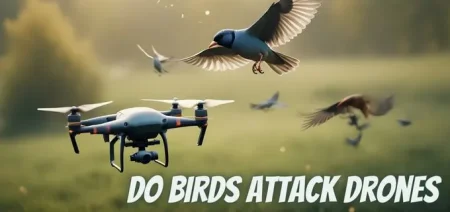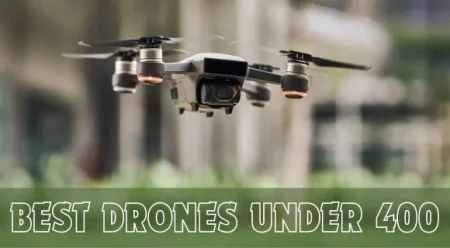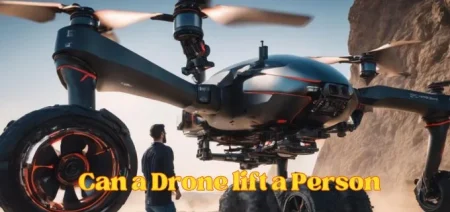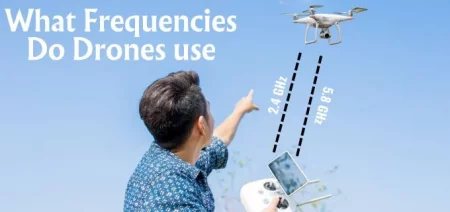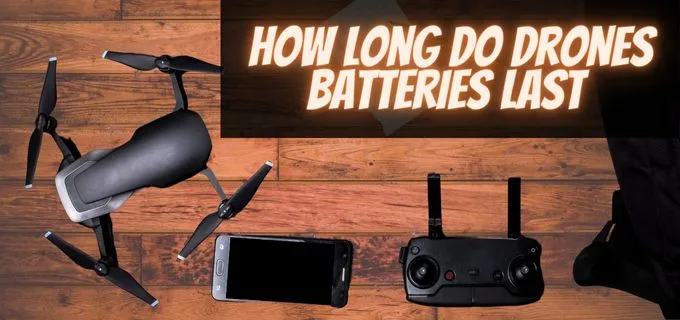
Drone batteries are a crucial component of any drone system. Without a reliable and long-lasting battery, your drone won’t be able to take to the skies for long or perform to its full potential.
How Long Do Drones Batteries Last
As with any electronic device, the battery life of drones is a critical factor to consider. Without adequate battery life, your drone’s flight time can be severely limited, and you may miss out on capturing that perfect shot. So, how long do drone batteries last? Let’s explore the answer to this question in this brief and informative article.
Typically, most consumer-level drones can fly for approximately 20 to 30 minutes on a single charge of their battery. However, more advanced and expensive models can remain in the air for up to an hour or more. It is important to note that the battery’s lifespan also depends on its age and usage; over time, it may lose its ability to hold a charge for an extended period.
The Role of Batteries in Drone Flight
Drones are powered by rechargeable batteries, which provide the energy needed to spin the propellers and keep the drone aloft. The battery plays a crucial role in powering the drone’s motors and other essential components and facilitating data communication between the drone and its controller.
The battery’s capacity, or the amount of energy it can store, determines how long the drone can stay in the air. If a drone has a battery with a larger capacity, it will be capable of flying for an extended period compared to a drone with a battery of lower capacity.
The flight time of the drone also depends on the type of battery, and the following are some common types of batteries used in drones:
Common Types of Drone Batteries
The most common type of battery used in drones is the Lithium Polymer (LiPo) battery. LiPo batteries are popular among drone enthusiasts because they are lightweight, have a high energy density, and can provide a high discharge rate. However, they require careful handling and storage to avoid damage or fire hazards.
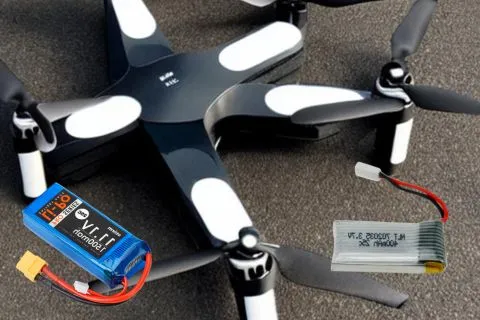
Other types of batteries used in drones include:
- Lithium-ion (Li-ion) batteries.
- Nickel-Cadmium (NiCad) batteries.
- Nickel-Metal Hydride (NiMH) batteries.
Li-ion batteries, including drones, are commonly used in consumer electronics due to their high energy density and low self-discharge rate. NiCad and NiMH batteries are less common in drones but may be used in specialized applications.
| Sr | Drone Name | Battery Type | Drone Battery Time | Lifespan of Battery |
| 1 | DJI Mavic Mini | LiPo | 30 minutes | 300 cycles |
| 2 | DJI Mavic Air 2 | LiPo | 34 minutes | 200-240 cycles |
| 3 | DJI Phantom 4 | LiPo | 28 minutes | 300 cycles |
| 4 | Parrot Anafi | LiPo | 25 minutes | 300 cycles |
| 5 | Autel EVO II | LiPo | 40 minutes | 300 cycles |
| 6 | DJI Inspire 2 | TB50 | 27 minutes | 200 cycles |
| 7 | DJI Matrice 200 | TB50 | 35 minutes | 200 cycles |
| 8 | Yuneec Typhoon H | LiPo | 25 minutes | 300 cycles |
Factors That Affect Drone Battery Life
Drone batteries are complex devices that can be affected by various factors. Understanding these factors and how they affect battery life can help drone pilots maximize the lifespan of their batteries and ensure that their drone performs optimally.
Flight Time vs. Battery Life
Flight time is one of the most significant factors that impact the battery life of a drone. The longer the drone flies, the more the battery is drained, which can reduce the battery’s overall lifespan.
It’s essential to understand your drone’s battery life, capacity, and expected flight time to optimize battery usage. It can be done by calculating the ideal battery capacity required for the desired flight time and selecting a battery with the necessary capacity.
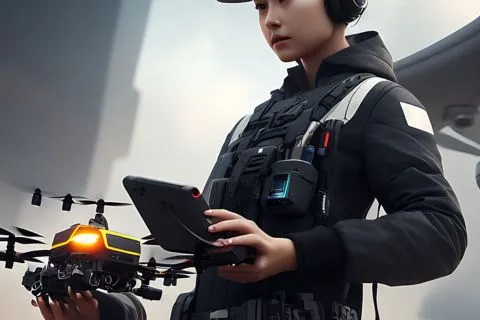
Environmental Factors
The battery life of a drone can be significantly affected by environmental factors such as temperature, humidity, and altitude. High and low temperatures, in particular, can accelerate battery degradation, leading to a reduction in its overall lifespan. Humidity can also affect the battery’s performance and increase the risk of corrosion or damage.
It’s essential to store and use your drone batteries in a cool, dry place, away from direct sunlight, moisture, and extreme temperatures. Additionally, avoid flying your drone in extreme weather conditions such as rain, snow, or high winds, which can stress the battery more.
Battery Age and Usage
Over time, drone batteries will naturally degrade and lose capacity, even with proper maintenance and care. The number of charging cycles the battery has gone through and how frequently it’s been used can also impact battery life.
Generally, drone batteries have a lifespan of around 200-300 cycles before they start to degrade significantly.
Drone Weight and Power Requirements
The weight of your drone and its power requirements can also affect battery life. Heavier drones require more power to stay in the air, which can drain the battery faster and reduce its overall lifespan.
Selecting the right battery for your drone’s weight and power requirements is essential to optimize battery life and performance.
Battery Chemistry and Technology
The type of battery chemistry and technology used in your drone battery can also impact battery life. LiPo batteries, for example, are lightweight and have a high energy density, but they require careful handling and storage to avoid damage or fire hazards.
It’s essential to understand the chemistry and technology of your drone battery to take the necessary precautions and ensure it performs optimally.
Understanding Battery Capacity and Discharge Rate
To ensure proper maintenance and usage of drone batteries, it is crucial to grasp the concepts of battery capacity and discharge rate.
Battery Capacity
Battery capacity refers to the battery’s energy storage and delivery capability, determining its overall performance. The capacity is measured in milliampere-hours (mAh) or ampere-hours (Ah) and is usually listed on the battery’s label.
Suppose a battery has a capacity of 3000mAh. In that case, it can supply a current of 3 amps for an hour or 1.5 amps for two hours, illustrating the relationship between battery capacity and power supply duration.
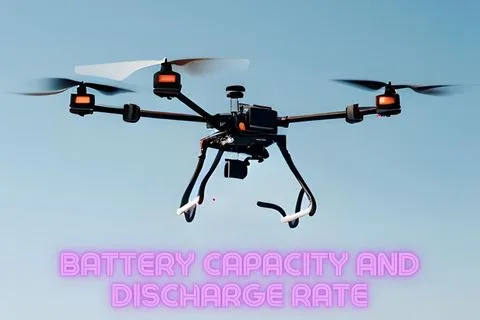
The battery’s capacity determines its flight time and is crucial when selecting a battery for your drone. A drone’s flight time is directly proportional to the battery capacity, meaning a higher capacity battery results in a longer flight time.
Discharge Rate
The discharge rate is the speed at which the battery discharges its stored energy. It’s measured in C, where C represents the battery’s capacity.
It is essential because it determines the maximum current the battery can deliver without damaging or overheating. When the discharge rate is too high, the battery can generate excess heat and potentially ignite, leading to a hazardous situation.
Selecting a battery with a discharge rate that aligns with the power demands of your drone is crucial for optimal performance and safety. If the discharge rate is too low, the battery may not be able to deliver the required current, causing the drone to lose power or shut down.
Battery Capacity and Discharge Rate in Practice
To understand how battery capacity and discharge rate affect drone battery life, consider the following example:
Suppose you have a drone with a power requirement of 12 volts and 3 amps. If you use a battery with a capacity of 3000mAh and a discharge rate of 1C, the battery can deliver a current of 3 amps for one hour.
However, if you use a battery with a higher capacity of 4000mAh, the battery can deliver a current of 4 amps for one hour. It means you can fly your drone for longer with a higher-capacity battery.
Alternatively, if you use a battery with a discharge rate of 0.5C, the battery can only deliver a current of 1.5 amps, which is not enough to power your drone. This can cause your drone to lose power, crash, or drone lost.
Selecting a battery with the right capacity and discharge rate for your drone is important to ensure optimal performance and maximize battery life. Additionally, always use a charger specifically designed for your battery to avoid damage or overheating.
Tips for Extending Your Drone Battery Life
Drone batteries are essential for your drone’s operation, and maximizing their lifespan is crucial. Here are some tips for extending your drone battery life:
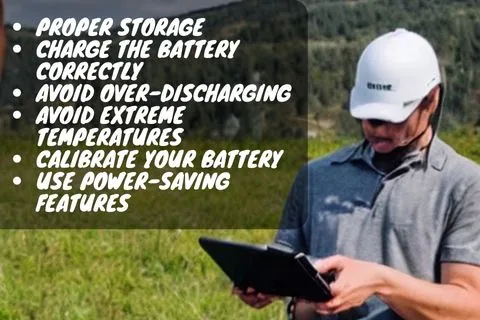
Proper Storage
When not in use, drone batteries should be stored properly to ensure they maintain their charge and extend their lifespan. Avoid storing batteries fully charged or fully discharged for extended periods. Instead, store them at around 50% charge.
Charge the Battery Correctly
Charge the battery with a charger designed for your drone’s battery to avoid overcharging, which can damage the battery. Follow the manufacturer’s instructions on the recommended charging time and temperature. Avoid charging the battery immediately after a flight or when it is hot; let it cool down first.
Avoid Over-Discharging
Over-discharging is a leading cause of battery failure. Most drone batteries come with built-in protection against over-discharging, but monitoring the battery levels and avoiding over-discharging is still essential.
Avoid Extreme Temperatures
Avoid charging or using batteries in extremely hot or cold temperatures. Extreme temperatures can negatively impact drone batteries, causing overheating and failure in high temperatures and reducing battery capacity in cold temperatures.
Calibrate Your Battery
Calibrating your drone battery can help to extend its lifespan. Calibration ensures that the battery’s power management system functions correctly and can accurately measure the battery’s charge level. To calibrate the battery, discharge it to around 20% and then charge it fully.
Use Power-Saving Features
Many drones come with power-saving features that can help to extend the battery life. These features include automatic landing, GPS-assisted hover, and low battery warning. Using these features can help to conserve battery power and extend flight time.
When to Replace Your Drone Battery
Drone batteries are an essential component of your drone’s operation; over time, they will start to degrade and lose capacity. It is crucial to understand when to replace your drone battery to guarantee maximum efficiency and avoid any potential safety hazards.
Here are some signs that indicate it’s time to replace your drone battery:
Reduced Flight Time
As a drone battery ages, its charge capacity decreases, resulting in reduced flight time. Observing a notable reduction in your drone’s flight duration could indicate that it’s time to change the battery.
Battery Swelling
Swelling is a common sign of battery wear and tear, and it occurs when the battery’s internal cells start to degrade or expand. If you observe any indications of expansion, such as a bloated or swollen battery, discontinue the usage of the battery right away and replace it.
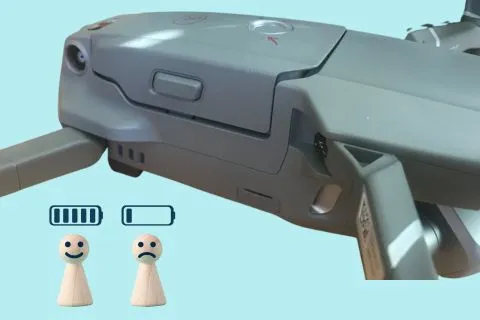
Error Messages
Some drones have built-in battery management systems that monitor the battery’s health and performance. If you get error messages concerning the battery, such as “low battery” or “battery malfunction,” it might suggest that you need to replace the battery.
Difficulty Charging
If you experience difficulty charging the battery, such as slow or incomplete charging, it may be a sign that the battery is no longer functioning correctly and needs to be replaced.
Age
Depending on the type and manufacturer, most drone batteries have a limited lifespan, typically around 300 to 500 charging cycles. If your drone battery has reached its maximum cycle count or has been used for several years, it’s likely time to replace it.
Conclusion
The battery life of drones varies depending on the drone model, battery type, and usage conditions. Drone batteries typically provide around 20-40 minutes of flight duration on a single charge. However, it is essential to keep in mind that the battery’s lifespan can be affected by several factors, including the number of charging cycles, storage conditions, and operating temperatures.
Regularly tracking your drone battery’s condition and effectiveness is crucial. Reduced flight time, swelling, error messages, difficulty charging, and age are all signs that indicate it’s time to replace your drone battery. Changing your drone battery when required guarantees peak performance and avoids potential safety problems.
I hope you found this article informative, and I want to express my gratitude for taking the time to read it.

